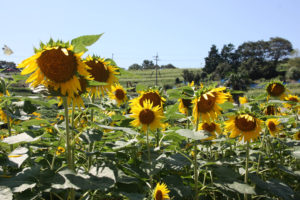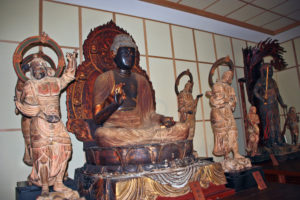Kunisaki peninsula travel guide
This Tourist information is created by Japan KYUSHU Tourist for enjoyment
of your travel. We are the Travel Agent in Fukuoka specializing in Kyushu.
When you have an idea or a plan for traveling in Kyushu, Japan, please contact
us by sending an Enquiry. Make an Enquiry
Kunisaki peninsula is a rural area located on the north-east side of
Oita-prefecture. It is especially popular for it’s onsen, and trekking, and
the local cuisine can be enjoyed as well. Kunisaki peninsula began to
develop 1,300 years ago as a sacred religious ground influenced by
local mountain and nature worship.
Exploring Kunisaki Peninsula
Showa no machi
 |
The era that lasted till about 30 years ago in Japanese history,
Bungo Takada was the most prosperous in Kunisaki Peninsula
for over 300 years from the Edo period up to 1900. Here
remains various old structures and remnants of regional
Japanese.
|
Fuki-ji Temple
 |
The temple is a Tendai Buddhist temple located on the slopes of
Mount Futago. The temple was established in 718 and the temple
building is the oldest extant wooden structure in Kyushu.
|
Nagasaki-bana Cape
 |
The resort park features a beach, a campsite, restaurant and more.
The entire premises gets painted beautifully with colors of each
and every seasonal flower in season.
|
Tashibu-no-sho
 |
This district was once considered the most important estate of Usa
Shrine. It has been ascertained from ancient documents that the
rural landscape seen today has remained unchanged since Heian
period. Now included this are, Kunisaki peninsula is listed on the
World Agricultural Heritage.
|
Kumano magaibutu
 |
Hewn in a rock Mt. Tahara are two of largest Buddhist stone carvings
in all Japan. A Fudo-myu-o 8 meter in heigt and Dainich-nyurai
6.8 meter height. Said to have been carved in the Heian period,
they have received government designation as Important
Cultural Properties.
|
Futago-ji Temple
 |
The Central temple of Rokugo-Manzan in Kunisaki peninsula. The
temple was established in 718 by Ninmon and located close to
the peak of Mount Futago. Futagoji’s grounds cover a wide area
on the forested slopes of the mountain, with stone and gravel
paths and stairs connecting several halls housing various deities.
|
Makino odo
 |
The temple houses nine Buddhists images said to be masterpieces
of the Heian period, including the Maki-Odo Seated Amida Nyorai
(Amitabha). Figure and statues of the Four Devas. All are
designated as important national cultural properties.
|
Kunisaki Peninsula


Home Sightseeing tour Christian Pilgrimage tour Golf tour What our Customers have to say
-
Oita-prefecture









